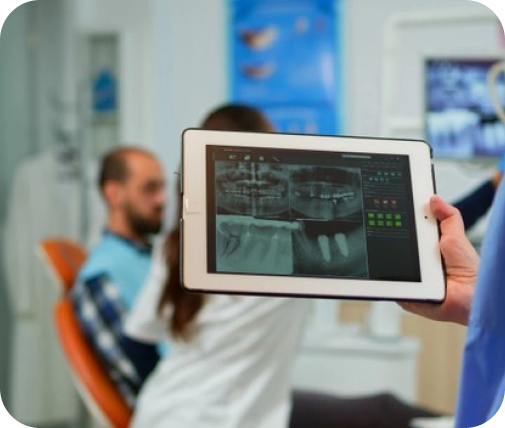x
-
Call Us
-
Send Email
- Dummy
Dental Sleep Medicine
-
Carroll Dentistry – Procedures – General Dentistry – Dental Sleep Medicine

Dental Sleep Medicine
Dental emergencies are quite frightening and often painful. Prompt treatment is almost always required to alleviate pain and to ensure the teeth have the best possible chance of survival.

Sometimes teeth become fractured by trauma, grinding or biting on hard objects. In other cases, fillings, crowns and other restorative devices can be damaged or fall out of the mouth completely. If there is severe pain, it is essential to make an appointment with the dentist as quickly as possible. The pain caused by dental emergencies almost always gets worse without treatment, and dental issues can seriously jeopardize physical health.
Types of dental emergency and how to deal with them
Avulsed tooth (tooth knocked out)
If a tooth has been knocked clean out of the mouth, it is essential to see a dentist immediately. When a tooth exits the mouth, tissues, nerves and blood vessels become damaged. If the tooth can be placed back into its socket within an hour, there is a chance the tissues will grow to support the tooth once again.
Here are some steps to take:
- Call the dentist.
- Pick up the tooth by the crown and rinse it under warm water. DO NOT touch the root.
- If possible, place it back into its socket – if not tuck it into the cheek pouch.
- If the tooth cannot be placed in the mouth, put the tooth into a cup of milk, saliva, or water as a last resort. It is important to keep the tooth from drying out.
- Get to the dentist, quickly and safely.
The dentist will try to replace the tooth in its natural socket. In some cases, the tooth will reattach, but if the inner mechanisms of the teeth are seriously damaged, root canal therapy may be necessary.
Lost filling or crown
Usually, a crown or filling comes loose while eating. Once it is out of the mouth, the affected tooth may be incredibly sensitive to temperature changes and pressure. Crowns generally become loose because the tooth beneath is decaying. The decay causes shape changes in the teeth – meaning that the crown no longer fits.
If a crown has dropped out of the mouth, make a dental appointment as soon as possible. Keep the crown in a cool, safe place because there is a possibility that the dentist can reinsert it. If the crown is out of the mouth for a long period of time, the teeth may shift or sustain further damage.
When the dentist is not immediately accessible, here are the steps to take:
- Apply clove oil to the tooth to alleviate pain.
- Clean the crown and affix it onto the tooth with dental cement. This can be purchased at the local pharmacy.
- If the crown is lost, smear the top of the tooth with dental cement to alleviate discomfort.
- DO NOT use any kind of glue to affix the crown.
The dentist will check the crown to see if it still fits. If it does, it will be reattached to the tooth. Where decay is noted, this will be treated and a new crown will be made.
Cracked or broken teeth
The teeth are strong, but they are still prone to fractures, cracks and breaks. Sometimes fractures are fairly painless, but if the crack extends down into the root, it is likely that the pain will be extreme. Fractures, cracks and breaks can take several different forms, but are generally caused by trauma, grinding and biting. If a tooth has been fractured or cracked, there is no alternative but to see the dentist as quickly as possible.
Where a segment of tooth has been broken off, here are some steps that can be taken at home:
- Call the dentist.
- Rinse the tooth fragment and the mouth with lukewarm water.
- Apply gauze to the area for ten minutes if there is bleeding.
- Place a cold, damp dishtowel on the cheek to minimize swelling and pain.
- Cover the affected area with over-the-counter dental cement if there is no way to see the dentist immediately.
- Take a topical pain reliever.
The nature of the break or fracture will limit what the dentist is able to do. If a fracture or crack extends into the root, root canal therapy may be the only effective way to retain the tooth. In the case of a complete break, the dentist will usually affix the fragment back onto the tooth as a temporary measure.
Dislodged/loose teeth
When a tooth has been dislodged or loosened from its socket by trauma or decay, it might be possible to save it. If the tooth remains in the mouth and attached to the blood vessels and nerves, there is a good chance root canal therapy will not be necessary.
It is important to call the dentist immediately to make an appointment. In the meantime, use a cold compress and over-the-counter medications to relieve pain. The dentist will reposition the tooth and add splints to stabilize it. If the tooth fails to heal, root canal therapy may be required.
If you have questions or concerns about dental emergencies, please contact your dentist.
Videos
Play Video
Play Video
Play Video
Play Video
